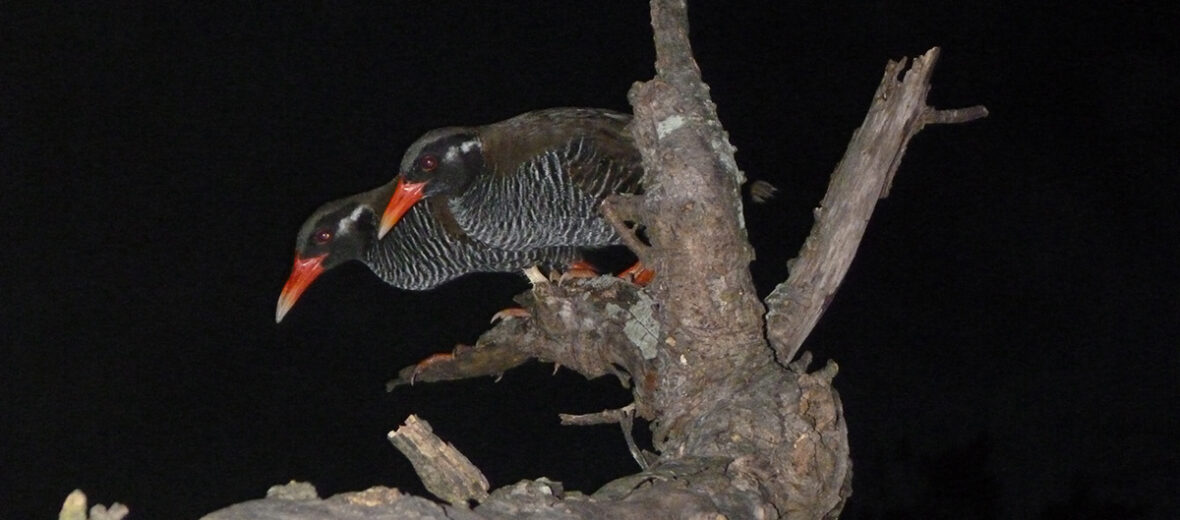
The Okinawa rail, aka Yanbaru rail, Yanbaru kuina, or agachi kumira, is a nearly flightless bird that hails only from Yanbaru, the northern part of Okinawa Island in the Ryukyu Islands of southern Japan. They prefer evergreen broad-leaved forests but they also dwell in marshes, grasslands, and cultivated lands near forested areas and bodies of water. Sadly, due to habitat loss at the hands of residential and commercial development, agricultural needs, deforestation, logging, road and railroad development (which divides their habitat and causes vehicle strike – being hit by vehicles), and dams; invasive species, and with them disease and predation; and climate change, and with it severe, habitat altering weather, these birds are listed as Endangered by the IUCN.
First the Stats…
Scientific name: Hypotaenidia okinawae
Weight: Up to 15.34 ounces
Length: Up to 11.81 inches
Wingspan: Up to 19.69 inches
Lifespan: Up to 20 years
Now on to the Facts!
1.) There were only an estimated 480 wild individuals as of 2020, and those numbers were and are decreasing.
2.) These birds nest and forage on the ground, making them terrestrial (spend all or most of their time on the ground) however, they roost in trees.
3.) This species was first described by Yoshimaro Yamashina and T. Mano in the Journal of the Yamashina Institute of Ornithology, in 1981.
4.) Okinawan rails are loud and call often. They call from the ground, but also from the trees.
5.) They utilize standing water for bathing.
But wait, there’s more on the Okinawa rail!
6.) Lizards, amphibians, snails, and large insects like locusts are all on the menu.
7.) These birds are monogamous (mate for life).
Did you know…?
These birds are poor fliers but can run very fast. Top speeds are estimated at around 8 mph.
8.) Nests are built on the ground and consist of grass, leaves, and fern fronds.
9.) Eggs are laid between May – July.
10.) Females lay up to 4 eggs.
But wait, there’s still more on the Okinawa rail!
11.) Eggs and chicks are often preyed on by the venomous habu snake.
12.) Okinawan rails are legally protected in Japan and have been declared a “Natural Monument” and a “Special Bird for Protection”.
Did you know…?
The Japanese Ministry of the Environment has developed a 10-year action plan which has steps and plans to take to stabilize this species’ numbers.
13.) Yanbaru became a national park in 2016 and several forest sites have been bought by conservation organizations as nature reserves.
14.) These birds are mostly nocturnal (active at night).
15.) Feral cats, Javan mongooses, wild dogs, and the afore mentioned habu snake all prey on these birds.
16.) Their flight capability is about equal to that of the domestic chicken.
Now a Short Okinawa Rail Video!
Be sure to share & comment below! Also, check out the Critter Science YouTube channel. Videos added regularly!
Want to suggest a critter for me to write about? Let me know here.
Some source material acquired from: Wikipedia & IUCN
Photo credit: Agostini Sylvain



